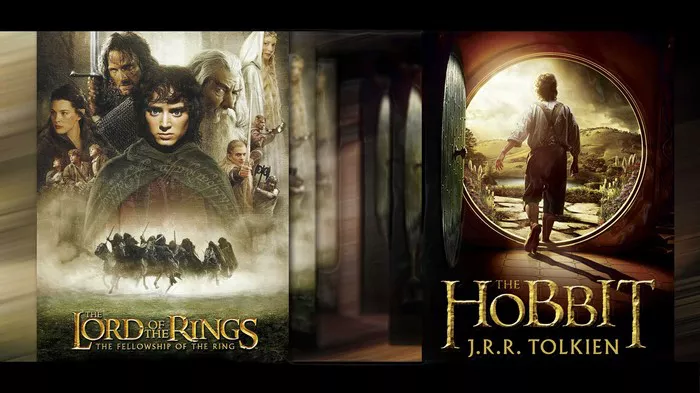Embarking on a literary journey through J.R.R. Tolkien’s Middle-earth is a profound experience, and at the heart of this exploration lie two seminal works: “The Hobbit” and “The Lord of the Rings.” In this article, we delve into the timeless debate—Which Is Better: The Hobbit or The Lord of the Rings? As we navigate the landscapes of fantasy, adventure, and profound storytelling, we unravel the unique merits of each work, exploring the impact, legacy, and enduring appeal that these masterpieces have carved in the world of literature.
The Hobbit: A Charming Prelude to Epic Quests
A Tale of Whimsy and Adventure
“The Hobbit,” published in 1937, introduces readers to the world of Middle-earth through the eyes of Bilbo Baggins. The story follows Bilbo’s unexpected journey alongside dwarves, wizards, and a dragon named Smaug. Its whimsical tone, fairy-tale-like atmosphere, and Bilbo’s growth from a timid hobbit to a reluctant hero contribute to the novel’s charm.
Elegance in Simplicity: A Single Epic Quest
One of the distinctive features of “The Hobbit” is its singular quest—the retrieval of the Lonely Mountain’s treasure guarded by Smaug. This simplicity allows for a focused narrative that explores themes of courage, friendship, and personal growth without the extensive complexity of multiple storylines.
The Lord of the Rings: Epic Scale and Mythic Proportions
A Tapestry of Myth and Heroism
“The Lord of the Rings,” published in three volumes between 1954 and 1955, expands the canvas of Middle-earth into an epic tapestry. The trilogy follows Frodo Baggins and a diverse fellowship on a perilous quest to destroy the One Ring and defeat the dark lord Sauron. The narrative weaves together intricate plots, rich characters, and mythic elements.
Multifaceted Storytelling: Multiple Threads of Narratives
Unlike “The Hobbit,” “The Lord of the Rings” introduces multiple storylines, each following different characters across Middle-earth. This multifaceted approach allows Tolkien to explore diverse cultures, histories, and conflicts, adding layers of complexity to the overarching narrative.
Comparative Merits: The Strengths of Each Tale
Character Depth and Development
“The Hobbit” excels in character development, particularly in Bilbo’s transformation from a comfort-loving hobbit to a brave adventurer. The simplicity of the narrative allows for an in-depth exploration of Bilbo’s psyche, making him a relatable and endearing protagonist.
In contrast, “The Lord of the Rings” shines in its expansive character ensemble. Frodo’s journey, Aragorn’s destiny, and the complexities of characters like Gollum showcase Tolkien’s ability to create a diverse cast with intricate motivations and arcs.
Tone and Atmosphere
“The Hobbit” captivates with its lighter, more whimsical tone. The story balances adventure with humor and maintains a sense of childlike wonder throughout. This accessibility makes “The Hobbit” an ideal entry point into Tolkien’s legendarium.
“The Lord of the Rings,” while containing moments of levity, adopts a more mature and somber tone. The weight of the Ring’s power, the looming threat of Sauron, and the sacrifices made by the characters contribute to a narrative that explores deeper themes of heroism, friendship, and the cost of power.
World-Building and Lore
Both works showcase Tolkien’s unparalleled world-building skills. “The Hobbit” introduces readers to the captivating realms of Middle-earth, laying the foundation for the more extensive exploration in “The Lord of the Rings.” The latter, however, delves deeper into the history, languages, and cultures of Middle-earth, establishing a more intricate and immersive world.
Conclusion: Appreciating the Tapestry of Middle-earth
In conclusion, the question of which is better— “The Hobbit” or “The Lord of the Rings”—is subjective and dependent on individual preferences. “The Hobbit” stands as a delightful and accessible introduction to Tolkien’s world, offering a charming adventure with a singular focus. On the other hand, “The Lord of the Rings” expands the horizons of Middle-earth into a vast and epic saga, exploring the complexities of heroism, sacrifice, and the battle between good and evil.
The merit of each work lies not in direct comparison but in their complementary roles within Tolkien’s legendarium. “The Hobbit” acts as a prelude, inviting readers into the enchanting realms, while “The Lord of the Rings” deepens the exploration, delving into the mythic and profound. Together, they form a tapestry that has left an indelible mark on literature, inspiring generations of readers to embark on their quests through the wondrous landscapes of Middle-earth.

